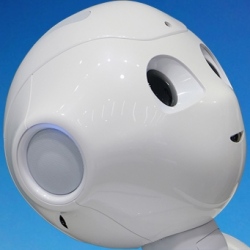
One of the biggest technical challenges with chatbots will be accessing and retrieving huge amounts of data. For example, we know from extensive retail examples that many customers simply don’t want to interact with a computer. They expect a human to help solve their problem.
The only way that chatbots can offer a simulated human-like experience is through A.I.. However, to achieve this, we must first tackle the deep learning conundrum of building massive data sets, which requires some way to accumulate that data.
Trying to teach a chatbot to have the same ebb and flow found in our everyday conversations is extremely challenging. From a computational perspective, it is a massive problem. Some A.I. algorithms currently address pieces of this problem. For example, the A.I. community has done a good job of language assessment for chatbots integrated into search engines.
Think about what happens when you Google a topic by asking a question; even if you aren’t 100 percent correct in how you phrase the question, it is very likely that you will still find the correct answer in the top results.
When you compare that success to chatbots, you readily see that using human language in a conversation is not as easy. This technology must take a unique conversation and understand what was said and how current statements may connect and modify past statements, and still provide an intelligent, human-like answer. The A.I. community continues to work to develop techniques to address this problem with the hope that we can eventually create a response that imitates what you would experience in a real conversation.
Unfortunately, limitations of deep learning mean that few computer scientists are focused yet on adding personality to chatbot responses. At its core, A.I. and chatbot technologies are trying to solve a lot of complex problems to provide an understandable, eloquent conversational partner.
Chatbots are one of the hottest subsets of A.I. right now, and in the coming years they are going to become both more prevalent in their use and more hidden in their implementation. New and innovative use cases will help answer questions on where chatbot use is acceptable and how it can be used to better serve users across many different domains.
Of course, the real question is whether a chatbot can ever live up to the expectations of the user, and whether one can ever convince a user they are chatting with a human. For example, Facebook integrates chatbots into its Messenger app to allow businesses to create interactions for customers; Amazon Echo gives customers access to chatbots that allow them to play music or pay their credit card bill; and Domino’s lets customers place pizza orders via social media.
If we look at the evolution of the field of A.I. over the past 50 years, the biggest successes are algorithms that started as A.I. research and that we don’t even think of as A.I. any longer, such as browser searches. We are seeing the same thing in chatbots as these algorithms are getting implemented in other places. Indeed, within 10 years, we will likely find that we no longer think of chatbots as a distinct technology, but as just an aspect of apps or another technology that we have yet to imagine.
